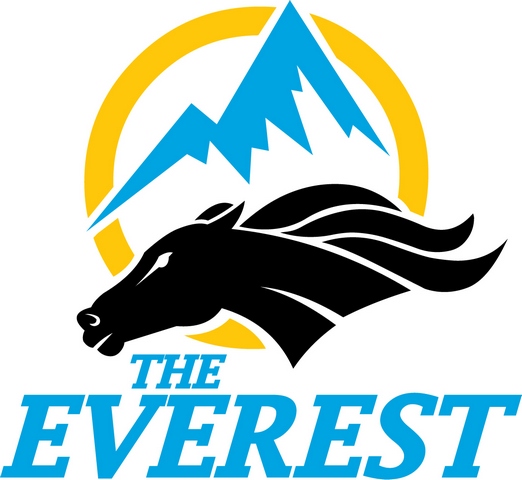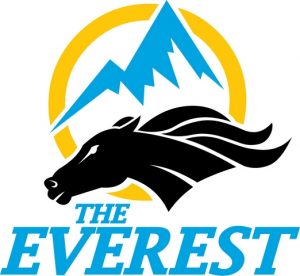
 Nobody could ever accuse the Racing NSW of lacking in vision. The increase in prizemoney in country and provincial racing and the Highway Handicaps concept are ample evidence of how intelligent decision-making can make a huge difference to the health of racing in general. But, can we be so confident that The Everest will be just as effective in promoting the overall well-being of the industry?
Nobody could ever accuse the Racing NSW of lacking in vision. The increase in prizemoney in country and provincial racing and the Highway Handicaps concept are ample evidence of how intelligent decision-making can make a huge difference to the health of racing in general. But, can we be so confident that The Everest will be just as effective in promoting the overall well-being of the industry?
Let’s look at the concept.
The Everest is a new race in the Sydney Spring Carnival, to be run over 1200 metres at Randwick, at WFA, and limited to 12 starters. The field will be made up of horses nominated by those parties who have purchased a slot in the race. To purchase a slot in The Everest, interested parties, who may or may not be horse owners, and who may or may not have a horse capable of competing at the required level, have to commit to a $600,000 fee for each of three years of commitment. Not a small sum! Those fees will go to provide $7.2 million of the prizemoney, with the remaining $2.8 million being raised from incremental wagering, broadcast and other raceday revenues.
The slots are tradeable commercial instruments. They can be sold, leased or joint-ventured, either as packages or as individual slots, before a nominated race entry date. So, there appears to be nothing to stop an investment fund, with absolutely no interest in horse racing, buying a slot on spec. A good thing? I’m not so sure. With this concept, and at least in theory, racing has entered an entirely separate commercial world to that in which it has traditionally operated. Instead of racing being operated for owners, trainers, jockeys and those of us who have a genuine interest in the sport, The Everest introduces almost a “stocks and shares” feel into the game. It’s no longer about the sport and the horses, it’s about the investment value of a slot.
The hope, and it is probably well founded, is that The Everest’s innovative business model will attract the very best sprinters in Australia, and also those from international racing. But look at the numbers. It’s a $1.8 million commitment on day one, so either the buyers have to have a great deal of confidence that they have a super sprinter capable of grabbing a serious share of the prizemoney – and that means a top three finish – or they have to have a great deal of confidence in the basic concept of The Everest holding its’ value if they decide to on-sell their slot in years 2 or 3. The attraction is really in the exclusivity and the prestige of the race. That’s quite clearly where the marketing is aimed. Racing NSW’s own publicity says that ‘a slot in The Everest provides its’ holder with the opportunity to run their horse in a race that will be the new benchmark of prestige in Australian racing.” But that holder may not even own a horse. Our imaginary investment fund, for example, could buy a slot, and then do a deal with an owner who could not justify the purchase of a slot, to allow them to nominate a horse in which they have no ownership interest at all. Another bit in the Racing NSW publicity says, “mounting yard access for The Everest will be the exclusive domain of the elite players of Australian and international racing.” I know that racing is the “sport of kings”, but really!
And will the race really attract the very best from all over the world?
It’s a 1200 metre scramble. Same as the Golden Slipper. I don’t see too many internationals lining up in the Slipper. The reality is that the champion European and Japanese horses are predominantly stayers, not sprinters. Caravaggio, Coolmore’s champion, and the horse most widely touted as a European nomination for The Everest, just got beaten – for the first time – in the July Cup at Ascot, finishing a fairly lacklustre fourth. Given that he has had 6 wins in a row before that run, and given that he has never been over longer than 6 furlongs, there are a couple of things that Coolmore and Aidan O’Brien will have to consider. Was it just a run that can be forgotten? Was it a run that showed that Caravaggio is starting to want longer than 6 furlongs? Was it a run that showed that he might be coming to the end of this preparation? Caravaggio is by Scat Daddy, and Scat Daddy never raced at less than 7 furlongs, and only once at 7 furlongs. His wins were over 1 mile and 1 1/8 miles. Breeding may indicate that Caravaggio just isn’t the right horse for Coolmore to travel across the world for a 1200 metre sprint.
It’s also interesting that there hasn’t, as yet appeared to be much chatter about any other international nomination. The media seem to be focused on She Will Reign, Chautauqua and one of David Hayes’ fast fillies. And there has been nothing on view about sprinters from Hong Kong, Singapore or South Africa, where sprinters are much more the go.
So, where are we at right now, with The Everest less than 3 months away. Put bluntly, trainers need to be bringing their sprinters back into serious work to get them ready for the race. I know that Aidan O’Brien is a genius, and that Coolmore isn’t short of a buck, but they have to work out what went wrong in the July Cup, travel him to Australia, go through quarantine, and have him freshened up and peaking on October 14. Very big ask!
The reality is that there is a very real possibility that The Everest may turn out to be the richest sprint race in the world, with a field made up of Australian horses. It will still be a great race, but in that circumstance, could it be considered a success?
I’m certainly not negative about the whole concept of The Everest. It’s a brilliant idea to have a $10 million race fully funded from fees and revenues directly associated with the race itself. The question is whether the choice of 1200 metres for the race aiming to become the most prestigious race in the country, with top international horses competing, was the right choice.
We will all know on October 14!
